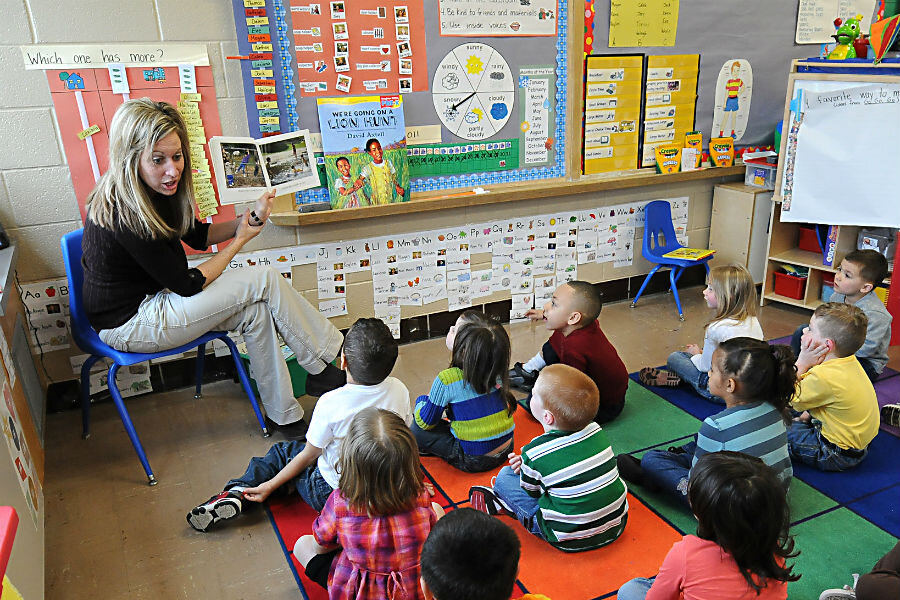Why doesn't pay for early childhood educators stack up?
Loading...
Early childhood educators earn significantly less than teachers of older children, and often make so little that they qualify for public benefits, according to a new report by the United States Department of Education.
The gap between teachers in early child care, preschool, and Head Start positions and their counterparts in kindergarten and above is wide, especially considering the impact that early education has been shown to have on children's educational and eventual career success. The Education Department study compared early educators’ wages to those of tree trimmers, parking lot attendants, and janitors, a disparity noted by department secretary John B. King, Jr.
“Undervaluing nation’s early childhood educators flies in the face of what we know about brain development and the optimal time for learning. Educating children before kindergarten requires significant knowledge, expertise, and skill – especially in light of the critical importance of the early years for children's growth, development, and future academic and life success,” Mr. King said in a release on the study.
“This report is a call to action for all of us,” he added.
According to the US Bureau of Labor Statistics, preschool teachers (excluding those in special education) earned a median annual wage of $28,570, about 55 percent less than the annual median wage of $51,640 for kindergarten teachers. Elementary and middle school teachers’ median wages are slightly higher, at $54,890 and $55,860 per year, respectively. The report also noted that 97 percent of early childhood educators are women.
The low pay contrasts with the importance of such positions in providing a foundation for students’ education, as well as with the pay of similarly qualified jobs in other fields. The Department noted that “early learning caregivers and teachers with a Bachelor's degree earn nearly half the average earnings of individuals with a Bachelor's degree overall,” despite the qualification equivalence. And even though most education institutions have upped their requirements for employees’ training and education level, wages have not risen.
“Wage parity across settings is critical to attracting and retaining a high-quality workforce, essential for a high-quality program,” said Linda Smith, the Administration for Children & Families’ deputy assistant secretary for early childhood development, in the release.
The large pay gap could partially be explained by a societal view of early childhood teachers as less skilled or essential than educators in the official K-12 cycle, more like a caregiver or nanny than a teacher. But previous child development research has shown that “the work of all lead educators for young children of all ages requires the same high level of sophisticated knowledge and competencies,” a fact not backed by early educators’ lowered public perception. That difference “compromises the quality of learning experiences for young children,” according to the Education Department.
“A teacher's salary level reflects how the work is valued by society. To maximize the potential of our young children and the educators and programs that serve them, we must do more to support and lift up preschool teachers,” said Libby Doggett, deputy assistant secretary for Policy and Early Learning. Dr. Doggett said her experience showed educators with incentives to become more qualified ended up improving their teaching and “classroom management.”
“As a nation, we must do better to honor early childhood educators as professionals,” said Doggett.








